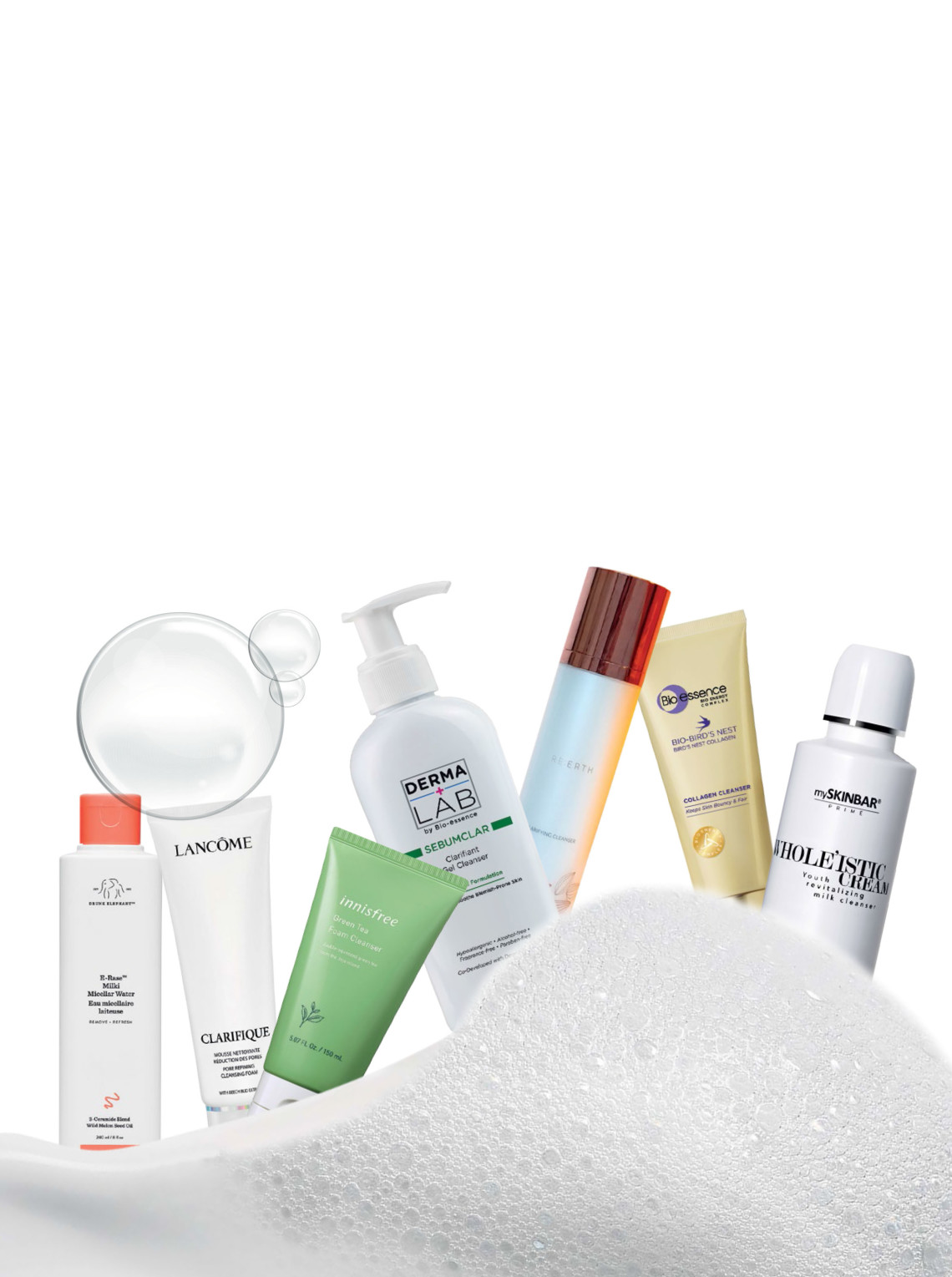A good scrub with soap and water may have done the job when you were younger, but as your skin matures, an effective facial cleanser is essential for soft and supple skin. Ahead, different cleansers choices for varying skin needs.


A good scrub with soap and water may have done the job when you were younger, but as your skin matures, an effective facial cleanser is essential for soft and supple skin. Ahead, different cleansers choices for varying skin needs.
Healthy skin begins with a good skincare routine, and this includes the vital step of cleansing once or twice a day. Failing to wash your face properly can lead to skin irritation, clogged pores, and acne breakouts. A quality facial cleanser helps remove makeup and dirt without stripping it of its natural oils. Cleansers also help to prepare the skin for serums and moisturisers that deliver hydration, antioxidants and sun protection.
Choosing the best cleanser for you largely depends on your skin type. Someone who is acne-prone, but at the same time, has sensitive skin should not be using a facial cleanser meant for acne-prone or oily skin types, as that would worsen their skin condition. Fragrance-free cleaners are preferable for those who have sensitive skin.
For dry and/or sensitive skin, look for cleansers labelled “gentle”, soap-free”, or “hypoallergenic”. These tend to be milky or cream-based cleansers. Ideally, cleansers should also respect your skin’s pH balance so that they do not leave it feeling tight and dry.
Our skin’s natural pH levels are at 4.5 to 5.5, but most cleansers that contain soap leave the skin with a residual alkalinity of 10, and therefore, strips off the natural, protective lipids from skin surface. Most cleansers do not state the pH range of their products, so look for words, such as “within the acid balance range” or “respecting skin’s pH balance”.
For oily or acne-prone skin, look for facial cleansers that contain ingredients, such as alpha hydroxy acids (AHAs) like glycolic acid or lactic acid; beta hydroxyl acids (BHAs) like salicylic acid; polyhydroxy acids (PHAs); witch hazel; benzoyl peroxide; or azalaic acid for a deeper cleanse. These tend to be gel- or water-based cleansers.

To double-cleanse or not to double-cleanse?
The double-cleansing method dates back to the Japanese Edo period, when geishas and maikos would double-cleanse to remove heavy makeup that was lead-based. Advocates swear by this method as they believe that it effectively purges skin of impurities without dehydrating the skin. In double-cleansing, the first cleansing product (usually a cleansing oil) removes most of the makeup and dirt from the face, before a second cleanser (like micellar water) takes away any leftover makeup and oils. Double-cleansing can be beneficial in hot and humid climates because of how effective it is in makeup removal, while leaving behind healthy skin with unclogged pores.
CLEANSING WIPES
Makeup remover and cleansing wipes have been popular for decades, particularly because they suit busy women and are inexpensive. However, although they may be convenient and time-saving, they should be used sparingly to avoid causing skin irritation. When choosing facial wipes, opt for products that are alcohol-free and gentle on the skin. Although most facial wipes aren’t very eco-friendly (they can clog landfill sites and pollute our waterways), you can find biodegradable wipes from brands, such as The Body Shop.
OIL CLEANSERS
You may think that oil cleansers are an odd way to wash your face as they, in effect, use oils to remove oil, makeup, and dirt. Yet, cleansing oils can be a super-hydrating way of cleaning your skin, especially if you have dry skin. While undoubtedly helpful when used sparingly, oil cleansers may congest the skin and contribute to acne and other unwanted skin conditions if used too frequently. Oil cleansers are usually marketed according to skin type, so make sure you choose one that’s suitable for your skin.

CLEANSING MILKS
These are made from an emulsion of fats and water, and so they usually have creamier formulas. Light and gentle on the skin, they’re also suitable for normal to combination skin, and are less likely to leave any residue behind. Milk-based cleansers tend to be mild and work well for makeup removal, too.
MICELLAR WATER
With a quick swipe of micellar water on a cotton pad, makeup, oil and dirt lift off the skin. This is because “micelles” (tiny balls of cleansing oil molecules) act as a magnet to draw makeup, sebum and impurities from the skin – without the need for harsh chemicals. Micellar water is a gentle and convenient option that’s also great for travelling or outdoor use, where you may not have access to clean water to wash your face. If your makeup is thick or if you use waterproof makeup, micellar water alone may not be sufficient (in which case you may need to double cleanse or simply use more cotton pads).

Daily cleansing for healthy skin
Remove makeup, grime, and impurities with these great cleansers
From Left:
• Drunk Elephant E-Rase Milki Micellar Water, $40 (240 ml).
• Lancome Clarifique Pore Refining Cleansing Foam, $63 (125 ml).
• Innisfree Green Tea Foam Cleanser, $14 (150 ml).
• Derma Lab Sebumclar Clarifiant Gel Cleanser, $21.90 (150 ml).
• Re:erth Clarifying Cleanser, $70 (100 ml).
• Bio-essence Bio-Bird Nest Collagen Cleanser, $10.90 (100 g).
• Myskinbar Whole’istic Cream, $59 (100 ml).
ADDITIONAL REPORTING: CANDY LIM-SOLIANO























